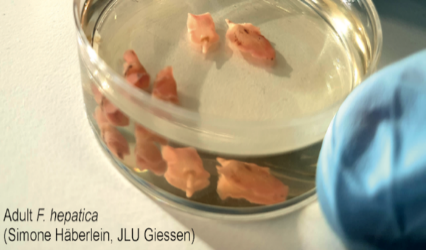Project 7: Physics of parasites
Biomechanics of adhesion, motion, and reproduction in platyhelminths
Blood flukes and liver flukes are parasitic flatworms that infect mammalian hosts in which they grow, feed, reproduce, and ultimately cause chronic infectious diseases. Two of the most prevalent and medically-important species affecting humans are Schistosoma mansoni and Fasciola hepatica, which are the focus of this project. These flatworms possess two suckers that enable the parasites to move to their final destinations within the host and to feed on host tissues. Although suckers are essential morphological structures for this class of parasites, the biomechanics of the suction-based adhesion system is little understood. Schistosomes exhibit another important biological feature: constant and intimate physical contact between male and female parasites is essential for the sexual maturation of the female.
This project investigates fundamental biomechanical principles contributing to parasite adhesion, locomotion, and reproduction: physical forces occurring at the parasite-host interface by the action of suckers, and physical forces acting at the parasite-parasite interface of the constantly-paired schistosome couple.
The biophysical questions to be answered are:
- Do adhesion forces and locomotion patterns differ between different fluke stages, sexes, and species?
- Do these forces depend on the physical properties of the parasite’s environment, such as substrate stiffness and flow stress?
- Do forces that act on the schistosome couple influence the reproductive capacity of the female parasite?
- Which forces acting on the female schistosome come via the male partner’s body?
To visualize, quantify, and mathematically model these forces, we will pursue an interdisciplinary approach using soft matter engineering of mechano-responsive polymeric hydrogels with microfluidics-based biochip systems (“worm-on-a-chip”), traction force microscopy, helminthology, in-vitro techniques, and advanced 3D tomography-based imaging. Knowing the underlying biophysical mechanisms of adhesion, locomotion, and reproduction will help to enhance our understanding of the parasites’ successful evolution and their adaptations to different host habitats.

